skip to main |
skip to sidebar
Ready, Steady, Cook used to be one of the cookery-cum-gameshow programmes that I watched with great enthusiasm in those far-off days when I was unemployed (on the insistence of the Home Office in the UK, I should add, and not because I was too lazy to work) and had lots of time on my hands. At that time I was unfamiliar with most British TV productions, actors, celebrities and shows – not to mention, show formats - so it was all new to me.
I still remember how horrified I was by Anne Robinson’s incredible rudeness to the participants on her quiz show, The Weakest Link, the first time I watched it. I couldn’t imagine anyone from other quiz shows I’d seen thus far – say, Mastermind UK, or Mastermind in India (with Siddharth Basu) – being so rude and getting away with it. And there didn’t seem to be any real reason for such personal attacks on what was meant to be a cerebral show. It took a while for me to realise that it was only a gimmick with Anne Robinson (ah, those days of innocence) and she was probably not as evil in real life... but the whole thing still took some getting over. Certainly, there was no way I could have faced that level of nastiness with the equanimity displayed by her victims, had I been a contestant.
Equally, I also still remember how instantly I was drawn to Ainsley Harriot’s goofy good looks, ebullient personality and permanent good cheer on Ready, Steady, Cook. The show format was also something I’d never seen before, and I was totally impressed by the amazing spur-of-the-moment decisions by the chefs on the show to make this recipe or that recipe based on what was in the bags they were given. Oh, for those days of innocence... I didn’t realise that it was all rehearsed and the chefs most likely knew what food items they were going to get from the contestants and, therefore, very likely also knew what they would be making with it.
This I discovered only during the application process for the show, when a very dear friend, Ammani (who’s way more enterprising, energetic, enthusiastic and extroverted than I could ever hope to be) persuaded me to apply to the show as a participant along with her. We had to fill out forms telling them about ourselves, our interests, our achievements thus far, and so on. I guess this was to see if we would be interesting enough for the show (and I really do feel that the reason we didn’t make the show was my exhaustive list of non-achievements. Had Ammani gone for a different partner, it would have been a cinch for them.)
Anyhow, along with our life stories, we also had to list the ingredients that we would be bringing along for the chefs, assuming we met the show’s criteria. A-ha! That was when the penny dropped for me - and that was when all the chefs that I collectively admired so much collectively cracked at their weak point and collectively toppled off their pedestals, leaving behind only their feet of clay. (Most of them eventually clambered back on, but the pedestals were only footstools and their feet remained clayey.)
But like I said, in the beginning it was all new to me, and I watched the chefs with a level of awe that they probably didn’t totally deserve, taken in by what I thought was unrehearsed improvisation, watching the recipes they made – and all in just 20 minutes cooking time! The level of energy was always high, given the time constraints, and Ainsley Harriot's presence made the show all the more lively.
Another thing I came to realise as I watched episode after episode was that the recipes weren’t really new, as such. Perhaps they differed a little in their list of ingredients (compared to the classic originals on which the chefs based their recipes), but that was all, and the differences only arose because of what they were given to work with. There were staple recipes from various cuisines – stir fries, bhajis, curries, casseroles, etc – which featured again and again.
I’m not complaining, really. It was just something that came as a slightly surprised realisation. For instance, the classic fish-and-chips, with salt and vinegar and mushy peas on the side, would be re-marketed by a chef as “posh fish and chips” on the show – maybe the chips would be sprinkled with rosemary, or instead of deep-fried chips they would have pan-fried potatoes, or add herbs to the mushy peas, etc and so on. And definitely the plating would be as showy as possible, to accentuate the difference between the regular stuff dished out by your corner chippie and the chef-cooked posh fish-and-chips.
And thus, gentle reader, I finally, finally come to the point of this post – my recipe today, which is for “posh” bread upma. It’s posh because I didn’t use ordinary bread... instead, I made use of some whole-wheat walnut pave loaf and some stone-baked boule which were left over from the previous day’s meal.
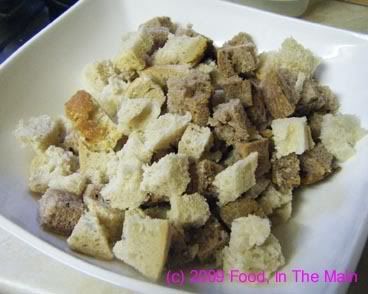
They did make a difference, because using good bread always makes a difference. You can make bread upma with ordinary sliced white bread from your local Tesco, and it will be edible - but as like as not, the bread will not hold its own against the rest of the masala that makes up this dish, simple though the masala is.
I know, I know... you’re probably wondering why this fuss over bread upma, a perfectly common dish that requires no specialty ingredients or cooking process – just stale leftover bread as the base. But bread upma is a really savoury, very delicious quick meal when you’re short of ingredients and time. You can make it as basic as you like or jazz it up – and mine is sort of poshed up. Seriously, though, the bread I used took on the flavour of the masala but didn’t itself turn to mush. It retained some bite and the small pieces of walnut only added to the upma's overall yumminess.
Stale bread is preferable for this dish, because of its firmer texture. But stale good quality bread is best, because it really makes this dish posh. In the style of Ready Steady Cook, anyway.
Recipe for: Posh bread upma
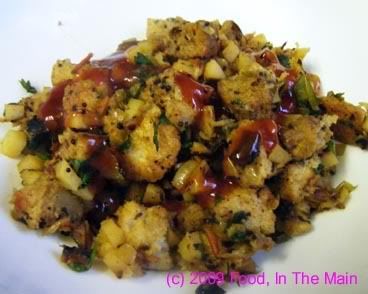
Ingredients:
4 cups stale good quality bread, cut into bite sized cubes (I used walnut bread and stone-baked crusty boule)
5-6 salad potatoes, chopped into small cubes
2 medium tomatoes, chopped
2 onions, chopped
1 small leek, chopped
5-6 fresh green chillies (or to taste), sliced into thin rings
3 tbsp yogurt (I used low-fat Greek yogurt)
1/2 tsp turmeric powder 1/4 tsp asafoetida powder (optional)
1 tsp mustard seeds
1 tsp cumin seeds
a few curry leaves
1 tbsp oil
Salt to taste 3-4 tbsp roughly chopped coriander leaves for garnish
Method:
1. Heat the oil in a wide-bottomed pan and add the green chillies, curry leaves, cumin seeds and turmeric powder and asafoetida and mustard seeds. Cover the pan and let the mustard seeds pop.
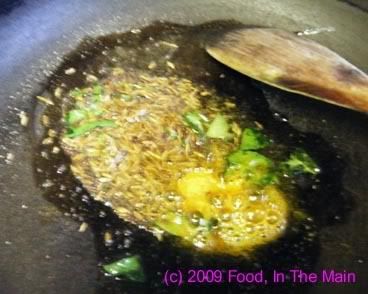
2. Add the chopped onions and leek next,
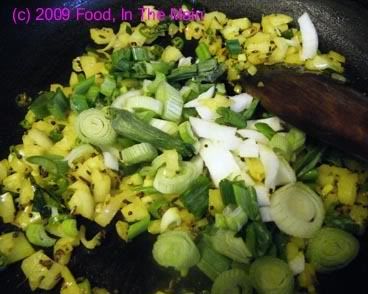
stir well and cook on a medium high flame till the onions soften and turn translucent and the leek has wilted.
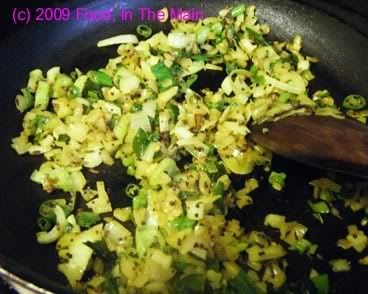
3. Now add the chopped tomatoes and cook till they soften and break down.
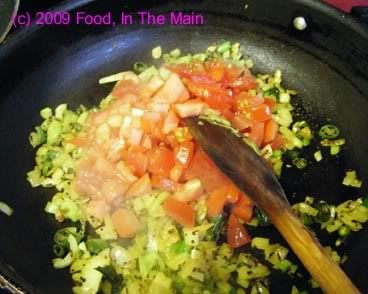
4. Next, add the cubed potatoes, stir well, cover and cook till the potatoes are done. Salad potatoes retain their shape even when cooked, but if you're using floury or mealy potatoes, make sure they dont break down completely.
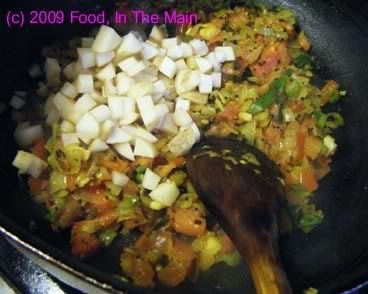
5. When the potatoes are cooked, stir in the yogurt. Turn the heat up and stir-fry for 2 minutes, till the moisture from the yogurt reduces.
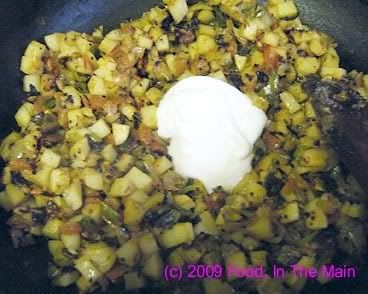
6. Add salt to taste and mix well. (Remember that the bread will have salt in it, so dont over-salt the masala). Add the bread now and mix carefully till the masala coats the bread evenly. 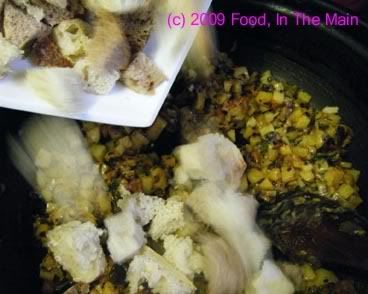
7. Turn the heat to medium-low and fry the bread with the masala till it starts to crisp up a little at the bottom.
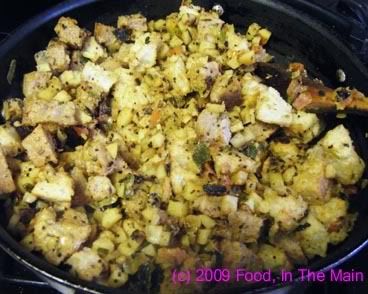 8. Sprinkle the coriander leaves, mix it all with a wide spatula and serve hot with tomato ketchup.
8. Sprinkle the coriander leaves, mix it all with a wide spatula and serve hot with tomato ketchup.
The nice thing about this bread-and-butter pudding is that it needs only 1 tbsp sugar – the natural sweetness of bananas, sultanas and currants more than suffices, especially for those without a sweet tooth the size of Ayers Rock. And if you don’t wish to use even that 1 tbsp sugar (mainly to sprinkle on top, for caramelisation purposes), well, this becomes an entirely processed-sugar-free recipe. Not bad for a dessert, is it? Serve this pudding with sugar-free or low-sugar icecream, or light cream, and the sin points still wouldn’t add up as much as from, say, a slice of frosted chocolate cake with cream.
Pete, as usual, doesn’t like desserts which combine eggs and milk – even if the end result isn’t as custardy as custard-from-scratch. To his credit, he did try a spoonful of this banana bread-and-butter pudding and pronounced it “very tasty”… but it still didn’t encourage him to go for a separate portion of his own. Which is okay, because I’ll get to have this over the next 4 days. It makes for a pretty small(ish) pudding – three reasonable servings, or four small ones, or two large greedy ones. All without the addition of icecream, that is.
It would be best to use slightly overripe bananas in this recipe, as there is no extra sugar added (worth saying again, I think!). Served warm, this pudding is really rather nice on a cold evening. Recipe for: Banana bread-and-butter pudding
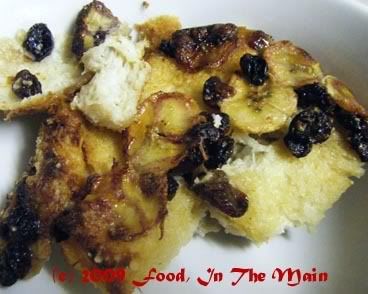
Ingredients:
4 slices bread
1 tbsp butter
3 tbsp sultanas
3 tbsp currants
1 large ripe banana, sliced
1 tbsp demerara sugar
1 tsp vanilla extract
1 egg
1 cup (225ml) milk
Method:
1. Beat the egg and milk together with the vanilla extract. Reserve.
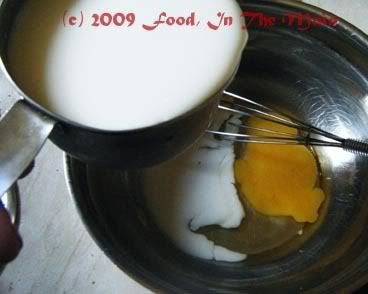
2. Cut the crusts off the bread.
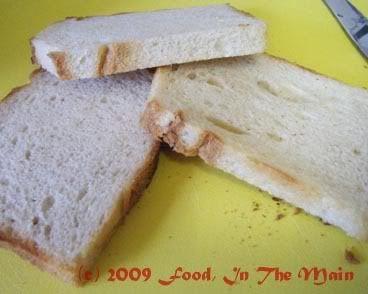
3. Lightly butter one side of each slice and cut each slice into four.
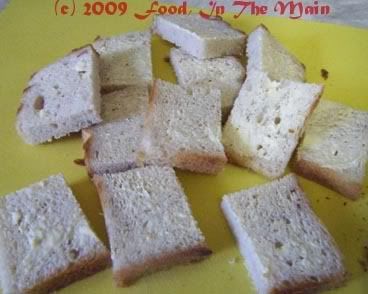
4. Mix the sliced bananas with the sultanas and currants.
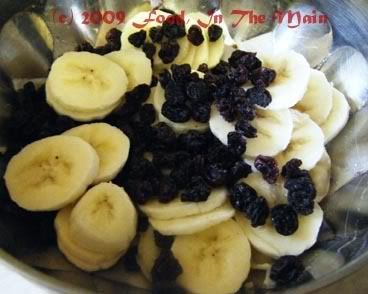
5. Butter a 1-litre baking dish lightly. Arrange half the pieces of bread, buttered side up, in the bottom of the baking dish.
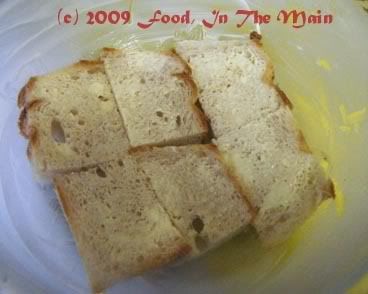
6. Spoon half the banana-sultana mix over the bread.

7. Pour half the milk mixture over this, making sure to cover all the bread. Sprinkle 1/2 tbsp demerara sugar over.
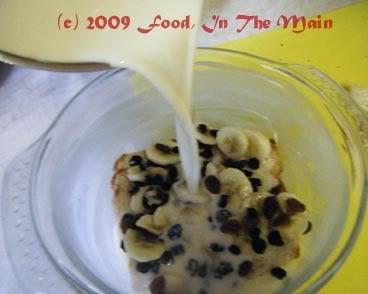
8. Layer the remaining pieces of bread, buttered side up again,
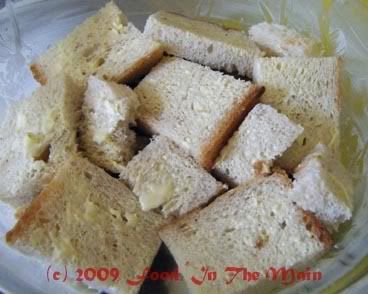
then the remaining banana slices,
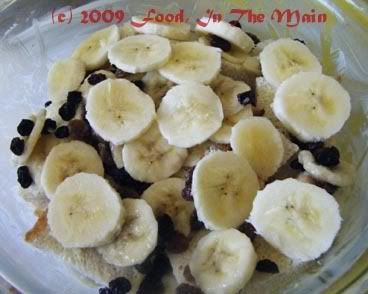
and pour the rest of the milk over.
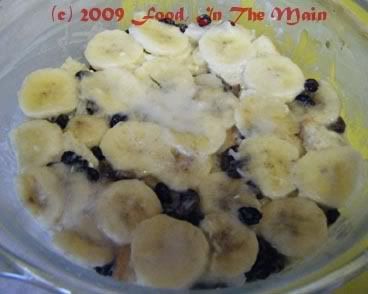
Sprinkle the remaining 1/2 tbsp of demerara sugar over the top.
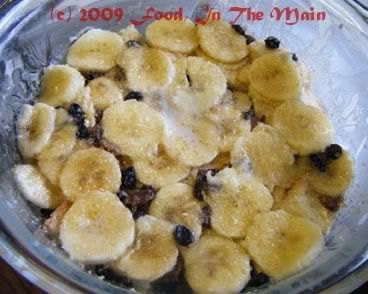
9. Press down gently and evenly to make sure that the bread pieces are all covered by the milk. Allow to soak for at least 30 minutes in the fridge.
10. Heat the oven to 180C and bake the pudding for 30-40 minutes or till the top layer of banana pieces are caramelised and the bread turns golden brown.
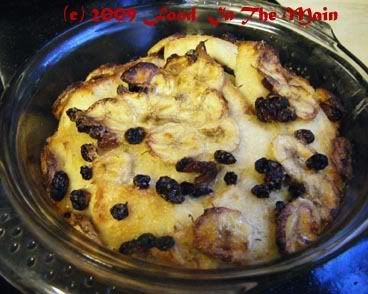
11. Serve warm as is, or with ice-cream or cream, if preferred.

It’s nice to be baking bread, because now I feel a bit emboldened to try recipes I’ve had since forever but never bothered making because – well, because I didn’t bake bread. It’s only recently that I’ve ventured into this area of baking, with so far – touch wood! – a reasonable rate of success. Who knows, I might yet get to be a Daring Baker and build whole edifices of cake (although I wouldn’t advise anyone to hold their breath waiting…).
Anyway, last weekend I made up my mind to bake curried vegetable-stuffed buns. And, in a breathtaking bit of daring derring-do (I felt like Errol Flynn at his most swashbuckling, to tell you the truth), I added fresh methi (fenugreek) leaves and omam (ajwain/carom) to the bread dough.
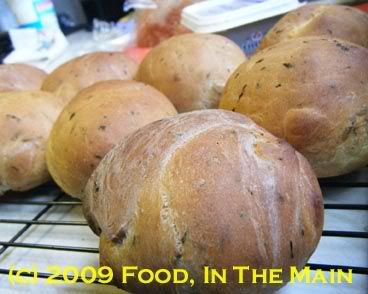
It all worked perfectly.
PS. I’m not going to gush any more than that this time, in case I alienate the few readers I have who expect me to be matter-of-fact, restrained and factual in writing about my recipes and their outcome… do I even have any such readers?
*sigh*
Recipe for: Curried vegetable-stuffed methi buns
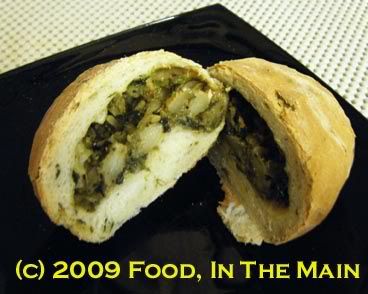
Ingredients - For the stuffing:
1 medium potato, boiled, peeled and roughly mashed/crumbled
½ cup finely chopped green beans, cooked
1 cup sliced spinach
¾ cup finely sliced shallots (or onion)
½ tsp sambar powder
½ tsp garam masala
½ tsp red chilli powder
¼ tsp asafetida powder (optional)
1 tsp cumin seeds
¼ tsp turmeric powder
Salt to taste
2 tsp oil
Method – the stuffing:
1. Heat the oil in a skillet and add the asafetida, the cumin seeds, turmeric powder and garam masala and fry for 30 seconds.
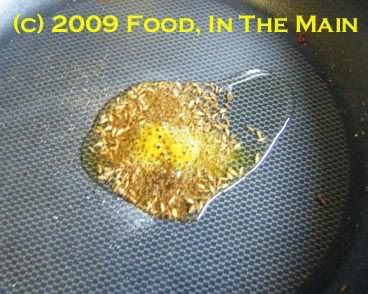
2. Add the sliced shallots
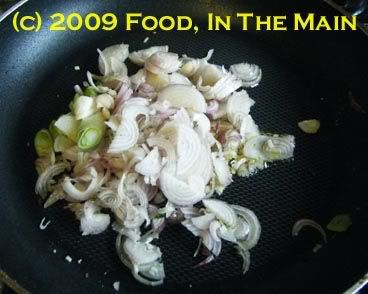
and fry for 3-4 minutes or till they start turning soft.
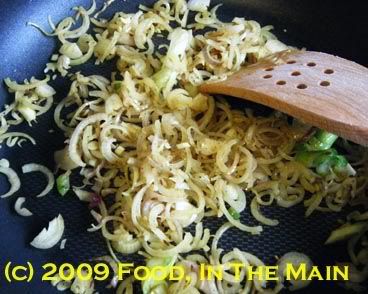
3. Then add the spinach leaves and sauté till they wilt.

4. Next, add the mashed potato and mix in,
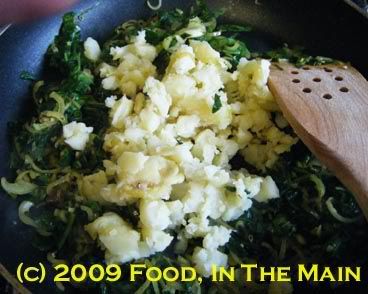
then the cooked green beans.
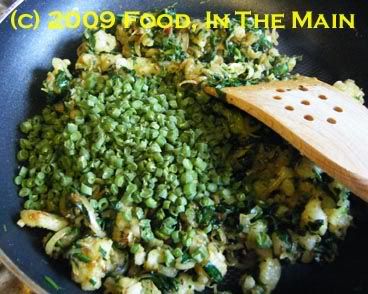
5. Sprinkle the sambar powder, chilli powder and salt in to distribute it evenly.
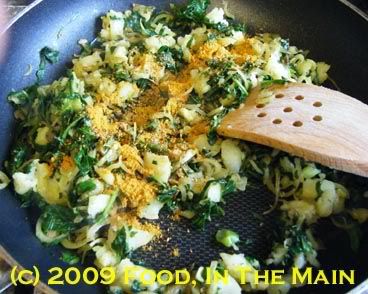
6. Let cool completely. The stuffing should be as dry as possible, so let it cool uncovered, so that condensation does not drip back in.
Ingredients - for the buns:
1 cup methi leaves, washed, dried and chopped, sautéed in ½ tsp oil till wilted, then cooled
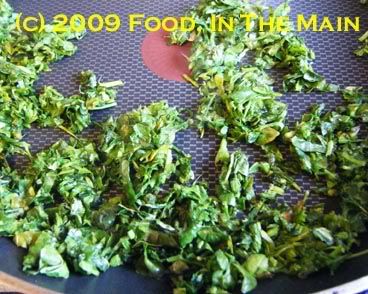
3-1/2 cups strong white bread flour
2-1/2 tsp instant dry yeast
½ tsp carom/ajwain/omam seeds (increase to 1 tsp if you really, really love the taste!)
1 cup water
½ cup buttermilk
2 tbsp melted butter
Salt to taste
Method – the buns:
1. Mix 1 cup bread flour, 1 cup water and the yeast in a large bowl so that there are no lumps. Let this stand, covered with plastic wrap, for 1-3 hours in a warm place, till it becomes bubbly.
2. Now stir 2 cups of the remaining flour,
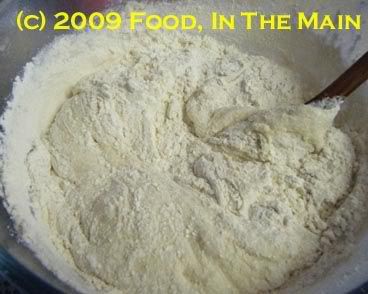
the buttermilk and sautéed methi leaves, melted butter,
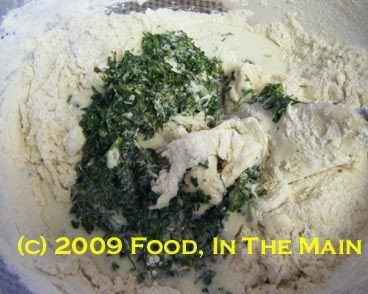
ajwain/carom/omam and salt into the starter.
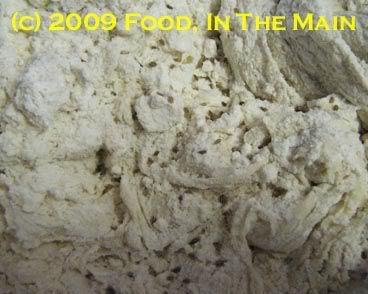
Mix with a wooden spoon till the dough pulls away from the side of the bowl.
3. Turn the dough out onto a clean, lightly floured surface and knead, adding the remaining flour a tbsp at a time, if required.
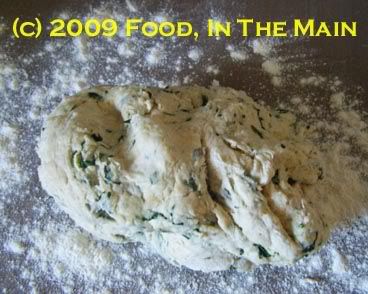
The dough should be springy, smooth and elastic when done (takes 6-8 minutes of kneading by hand).
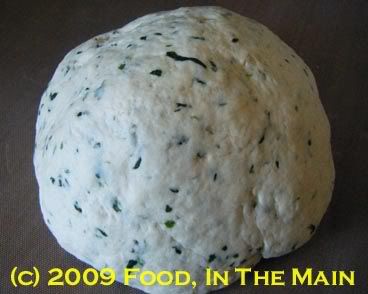
4. Now grease the bowl lightly with butter or oil, and put the dough in, turning it around once or twice so that it is coated. Cover with plastic wrap and pop back into your warm place. (Mine was again the oven.) Leave it for 1-1/2 hours or so till the dough is doubled in volume.
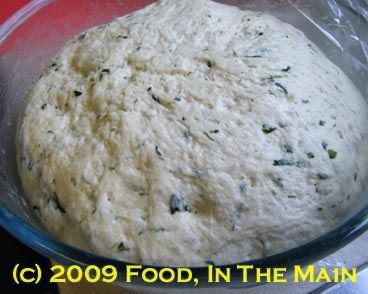
5. Punch the dough down lightly,
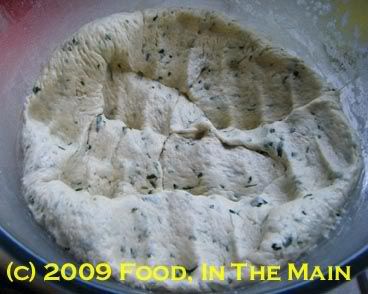
turn it out onto the kneading surface, knead very briefly, and divide into tennis-ball sized rounds. (This makes about 9 large buns.)
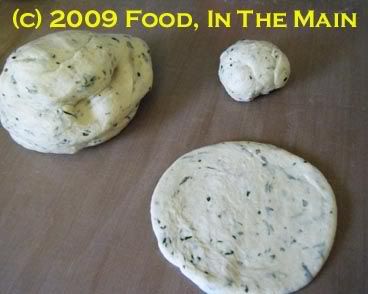
Roll each round into a circle of about 5” diameter.
6. Place 2 tbsp of the filling in the centre of the circle,
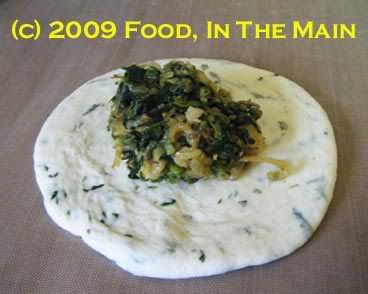
then fold the circle closed.
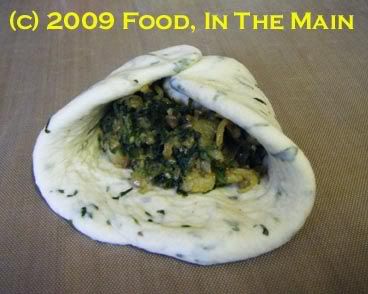
Pinch the folds to seal the stuffing in,
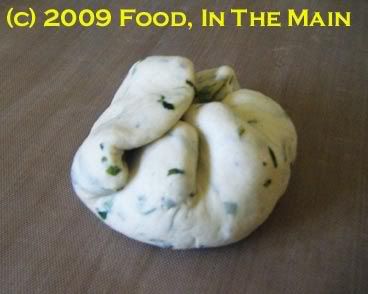
then place the ball seam side down and sort of roll it in place to make sure the seams are fully closed.
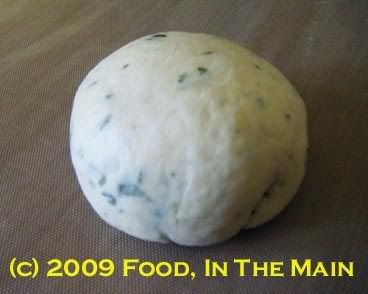
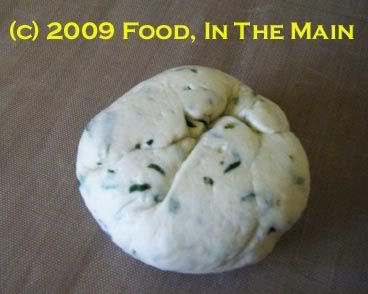
Underside of filled dough ball after rolling in place to close the seams.
Repeat with remaining balls of dough and filling.
8. Place the filled dough balls on a baking sheet covered with non-stick silicone paper (or lightly grease the sheet if, like me, you’re out of non-stick paper)
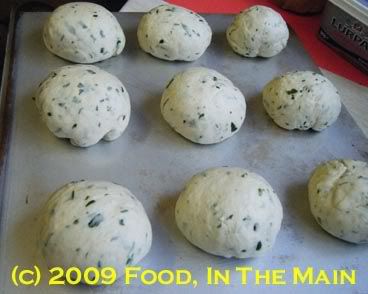
and let rise for 20 minutes.
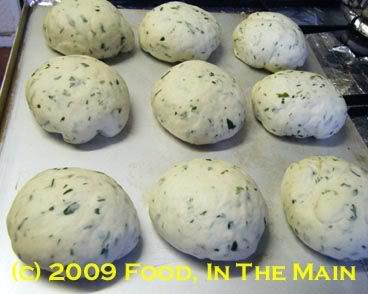
9. Put the tray in a cold oven and turn it on to 200C. (The rolls will rise further as the oven heats to the required temperature.)
Bake the filled rolls for 30 minutes or so, till golden brown on top. If they sound hollow when tapped on the bottom, they’re done.
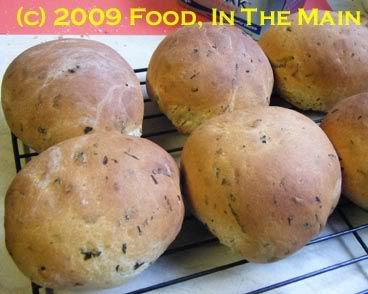
10. Wrap the rolls in a clean tea towel if you like the crust to be soft. If not, let cool on a rack till just warm. Serve the buns as a snack by themselves or with soup.



















































